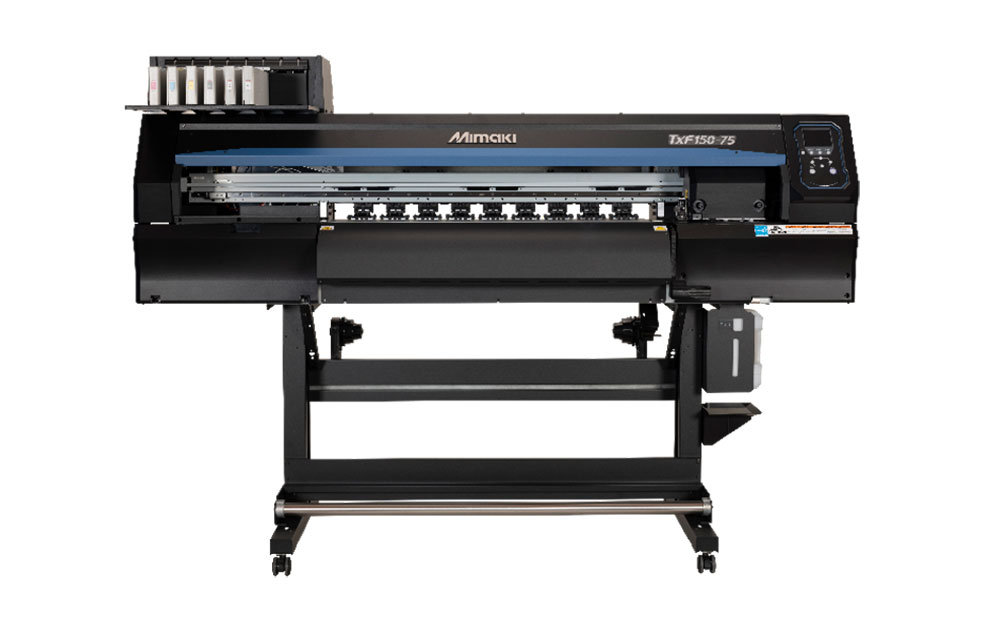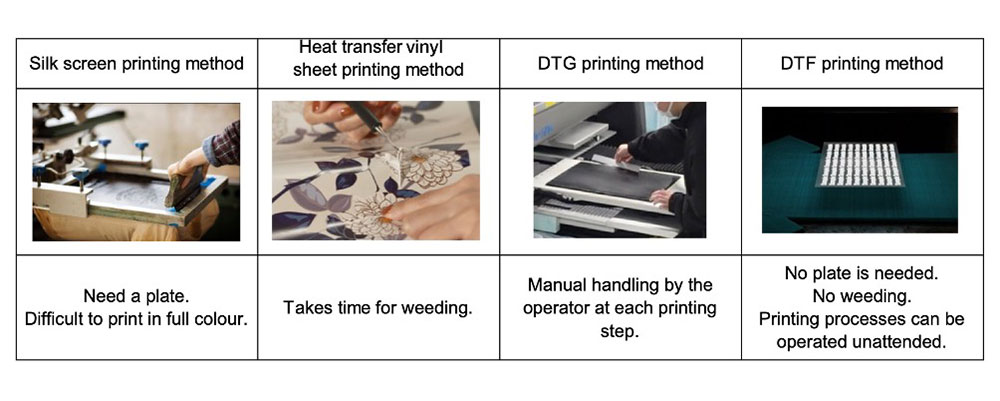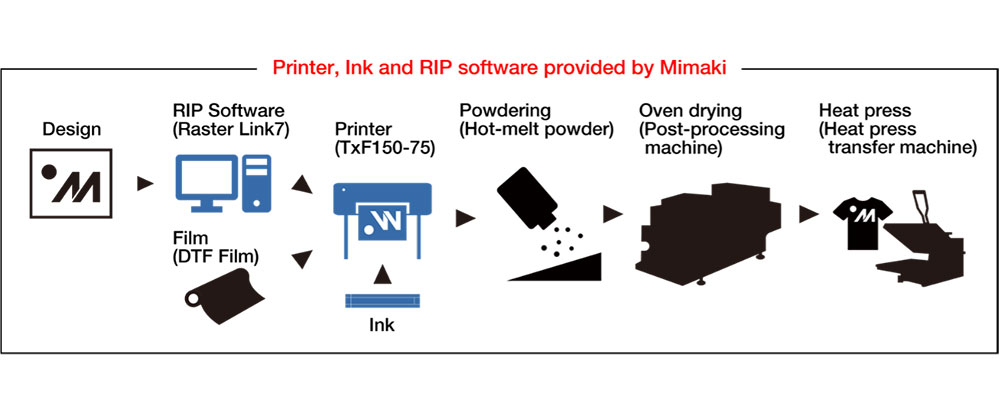
Mimaki USA, a leading manufacturer of wide format inkjet printers and cutters, has developed its first direct-to-film (DTF) printer, “TxF150-75,” and heat transfer pigment ink, “PHT50,” for DTF. Sales of these products, targeting textile and apparel printing applications, will begin in summer of 2023.
DTF printing is a method that has become widespread in the textile and apparel industry, particularly in the wearable printing market, often used in T-shirt printing. With DTF printing, the design is first printed directly on a unique transfer film; next the printed film is sprinkled with hot-melt powder, which is then heated and dried to form a transferable ink layer on the film. The formed ink layer is transferred to the fabric by a heat press to complete the finished product.
The TxF150-75 is an inkjet printer with a maximum printing width of 31.5 inches for producing DTF print transfer sheets. The new PHT50 heat transfer pigment ink made for DTF applications consists of five colors (CMYK and white), and is scheduled to obtain the ECO PASSPORT certification by the end of March 2023, which is essential for meeting the international safety standard for textile products “OEKO-TEX.”
 To overcome the ink ejection defects and white ink clogging that have plagued previous DTF printers, Mimaki has adopted a degassing ink design which employs aluminum packs to encase the ink, along with a white ink circulation function MCT (Mimaki Circulation Technology). This new printer also features Mimaki’s NCU (Nozzle Check Unit) and NRS (Nozzle Recovery System) technologies to support stable operation. These features enable continuous printing and increased production.
To overcome the ink ejection defects and white ink clogging that have plagued previous DTF printers, Mimaki has adopted a degassing ink design which employs aluminum packs to encase the ink, along with a white ink circulation function MCT (Mimaki Circulation Technology). This new printer also features Mimaki’s NCU (Nozzle Check Unit) and NRS (Nozzle Recovery System) technologies to support stable operation. These features enable continuous printing and increased production.
Currently silk screen printing is widely used in the wearables print market. This labor-intensive process requires the preparation of plates, making it unsuitable for small-lot production. Moreover, full-color printing involves time and labor to create plates for each color. An alternative heat transfer method using vinyl sheets is also commonly used, but it involves manual labor for “weeding,” which is the process of manually removing unnecessary portions of the transfer before fixing the printed design on the fabric.
In recent years, there has also been a growth in direct-to-garment (DTG) printing, which uses inkjet printers to print designs directly on garments and fabrics. DTG printing does not require plates and can be used for full-color printing, but it does require fabric pre-treatment and manual handling by the operator at each printing step.
 DTF printing eliminates the need for plate preparation and weeding, which has proven difficult in conventional printing methods. Since it enables an unattended printing process operation, DTF is rapidly being adopted as a technology that reduces labor time and cost.
DTF printing eliminates the need for plate preparation and weeding, which has proven difficult in conventional printing methods. Since it enables an unattended printing process operation, DTF is rapidly being adopted as a technology that reduces labor time and cost.
The TxF150-75 is scheduled for sale in summer 2023 and will include printers, inks, and RIP software.
—Press Release










